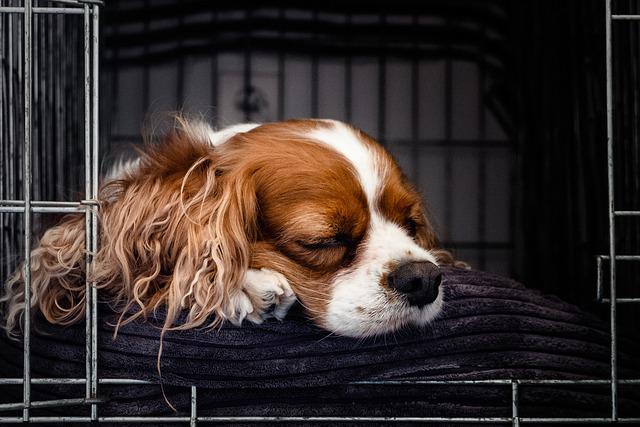You’ve got a new puppy or adopted a dog and now you want to know how to crate train a dog? Crate training a dog is important as there will be unavoidable events in your dog’s life that will require them to be closely confined and it’s great for house training them.
At one time or another your dog will need to be hospitalized or your dog may travel with you in a car or airplane. You might need to confine your dog for their own safety when staying in an unfamiliar environment such as a friend’s house that has not been dog proofed or if there is other dogs or young children there.
Your dog might also be confined while being boarded or groomed. There is also the chance that your dog will need to be safely confined if you are ever the unfortunate victim of a disaster such as a fire or flood that requires you to be rescued and temporarily sheltered.
How old can should a dog be for crate training?
A dog of any age can be crate trained, and crate training is a great aid when house training a dog, whether they’re a puppy or a recently adopted adult dog.
How long it takes to create train your dog depends on their age, their experience with a crate, and their temperament. Some dogs and puppies are easily crate trained in a few days while most others require a little more time and effort to be crate trained.
It’s your dog’s safe place
Your attitude about your dog’s crate greatly affects how your dog views it as well. Your dog’s crate should be their den and their safe place where they can get away from everybody and everything, and where your dog has comfortable bedding in a sense of security.
Your dog should never have fear or displeasure for their crate, so be sure to never use the crate as a means of punishment. If you must, designate another spot for the dog to go as a means of punishment.
Where should the crate be placed?
Place the crate in a temperature-controlled area that is close to, but not in the middle of your home’s activity areas. Remember that a dog is a social animal, and a crate shouldn’t be used to isolate him from the family.
What should the crate be made of and the size?
Use a metal, cage like crate, or the type of plastic crate used to transport large dogs on airplanes. Be sure there is room for them to stand up, turn around, stretch, and breathe comfortably. Your dog needs to be comfortable in the crate, not cramped, so make sure the crate size is more than large enough to accommodate them.
How do you get them used to the crate?
When you begin crate training, feed your dog their meals in the crate. If they’re scared to go in the crate, place the food bowl just inside the door, and gradually overtime move it toward the back of the crate.
Once your dog is comfortable eating in a crate, begin closing the door while they’re eating. If at any time your dog becomes frightened during the process, back up and start over, only make changes more slowly than you did the first attempt.
Begin leaving your dog in the crate for longer periods of time gradually increasing the time span by 30 minutes. Never let your dog out of the crate when they’re whining or barking, instead wait for them to settle down so that they realize that quiet behavior will be rewarded.
How long should you use the crate?
A good rule of practice for puppies is they can be crated the number of hours equal to their age in months plus one hour, so that a two month old puppy can be created for three hours, a four month old puppy for five hours, and so on.
Because a puppy can hold it for only a few hours at a time, place their create near your bed so that you wake up when they wake and need to go to the bathroom, and then take your dog out of the crate to go to the bathroom outside.
Adult dogs who have never been in a crate need time to adjust, just as puppies do. Don’t make the mistake of putting your new puppy or dog in a crate and leaving them there for 9 or 10 hour stretches. The result is a miserable dog who learns to despise the crate, and to urinate and defecate in it because they weren’t given any other opportunity.
Return home every few hours or have a trusted friend, close neighbor or a professional pet sitter visit to be sure your dog is adjusting to the crate and to allow your dog out do to relieve themselves.
Conclusion
Most adult dogs can eventually be comfortable confined for as long as eight hours, but keep in mind that the purpose of the crate is to assist with house training, provide the dog a voluntary safe zone from a busy household, and to teach them to be comfortable being confined when necessary.
Remember, the goals are to house train your dog and to get them used to being in a crate if needed.Once your dog is reliably house trained and has learned the rules of the house, allow your dog some freedom during your absence and during nighttime hours.




One thought on “How To Crate Train A Dog?”
Comments are closed.